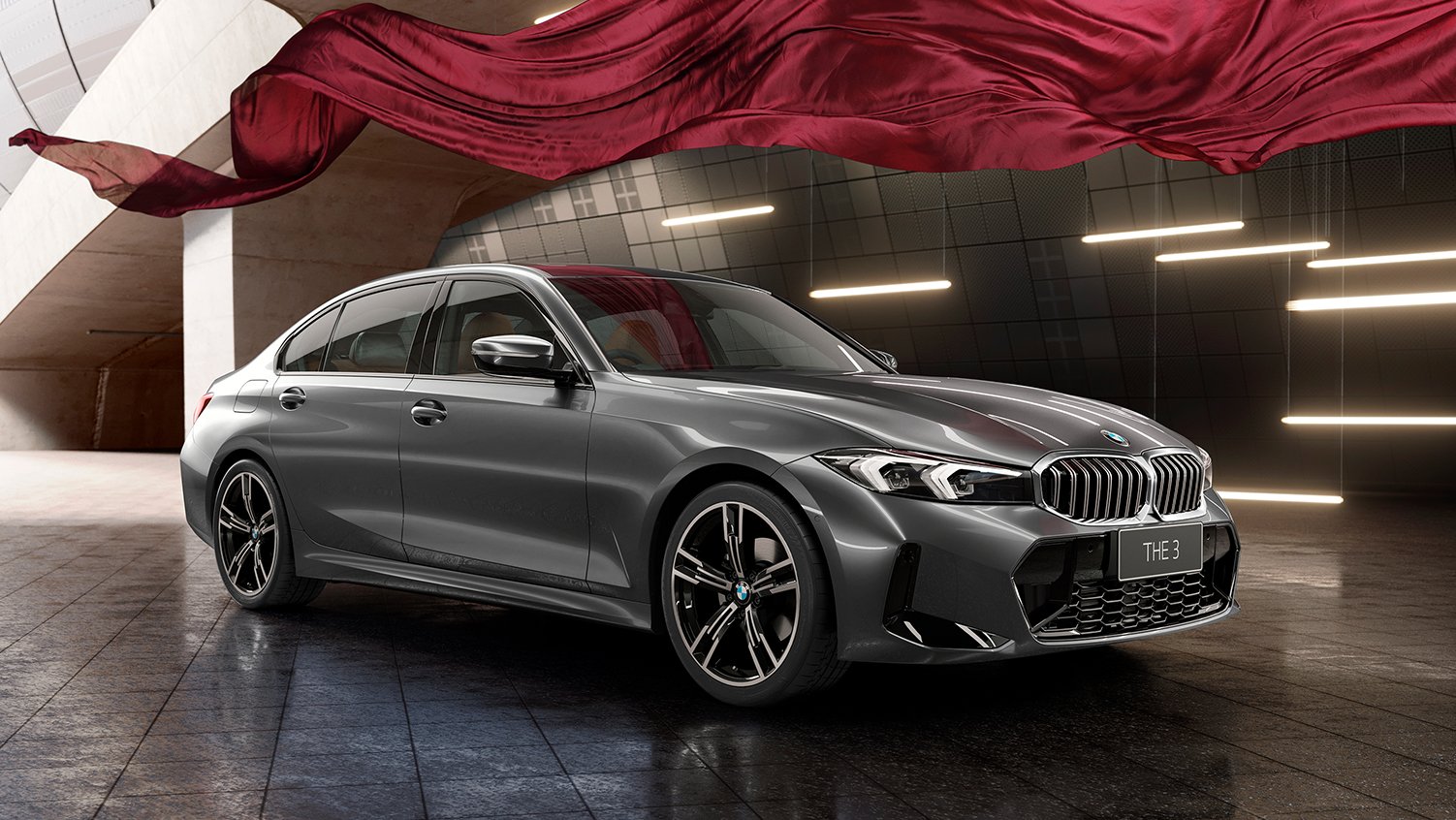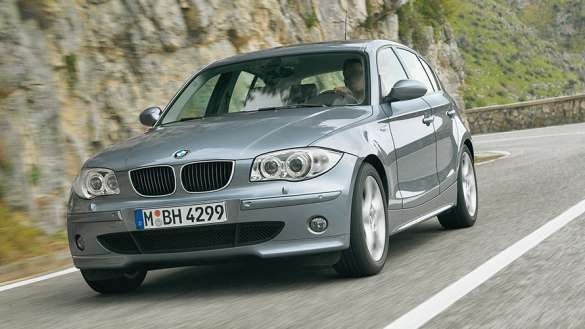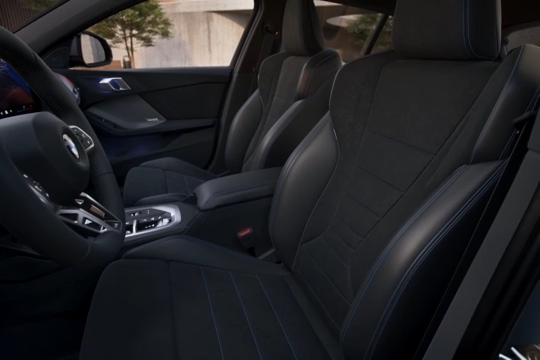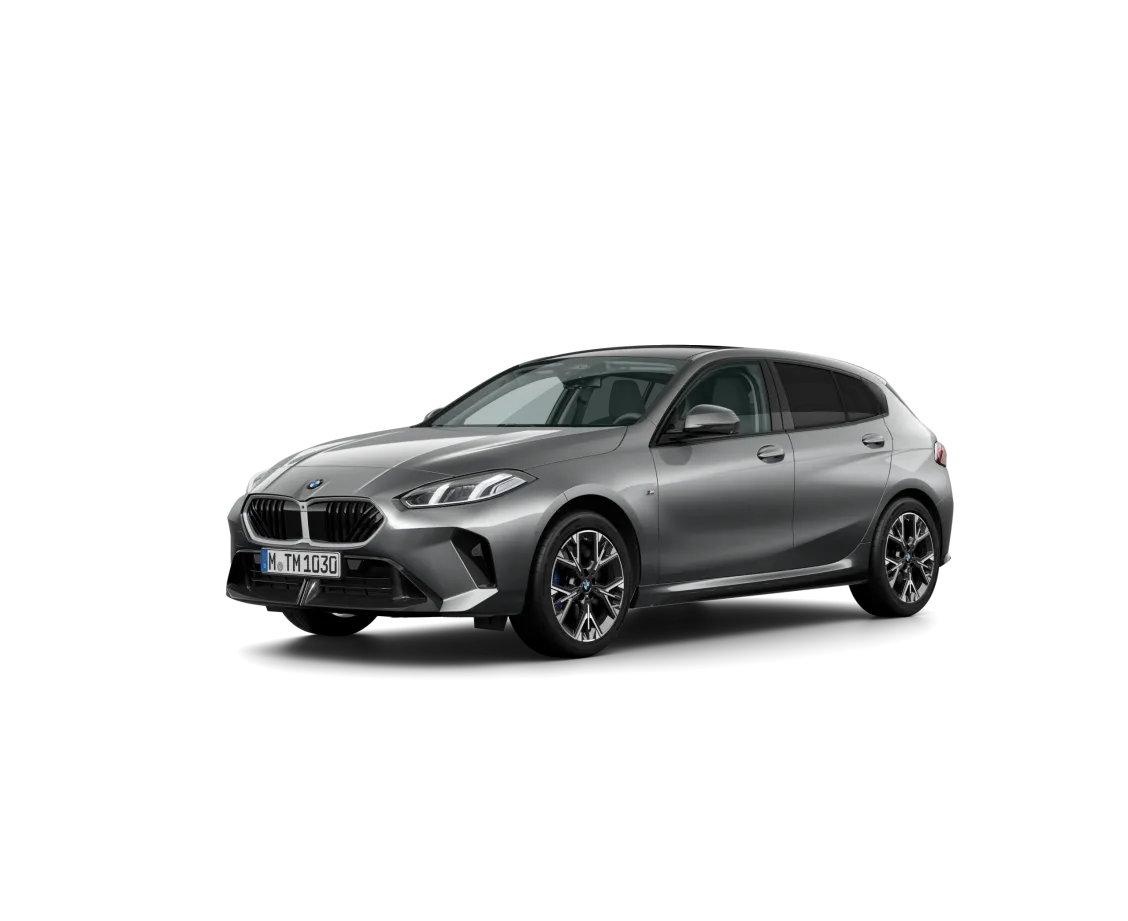Overview
BMW 1 Series Review: The BMW 1 Series is back, continuing to hold its place as one of the most appealing compact hatchbacks available. Building on the 2019 model, the latest version offers a sleek, refined five-door design with a transverse engine layout, prioritizing both sophistication and strong engineering.

True to its heritage, the 1 Series positions itself as a premium option among compact cars, providing an alternative to BMW’s crossovers like the X1 and X2. While not a complete overhaul, the 1 Series focuses on perfected details, aiming to stay competitive in its segment.
What’s New?
The 1 Series has been updated with subtle yet significant changes. At the front, the design now sports a more streamlined, less prominent grille, which deviates from BMW’s recent preference for larger grilles. The M Sport model includes unique lighting around the grille for added flair. Though the doors and general structure are similar to the previous model, BMW has enhanced internal elements to improve crash safety. The rear end now features slightly flared wheel arches and a subtle embossed logo, adding a sophisticated touch.
Inside, updates include a redesigned dashboard and seats, along with a modern, curved-screen interface. This new screen setup doesn’t feature BMW’s classic control wheel, which some drivers may miss, but overall, the cabin uses high-quality materials and offers a visually pleasing and functional layout. The refined face vents with aluminum accents and ambient lighting further enhance the cabin’s premium feel.

Engine Options and Performance
The 1 Series provides two main engine options: a 168bhp three-cylinder 120 model with front-wheel drive and a more powerful 296bhp four-cylinder M135 xDrive with all-wheel drive. This lineup doesn’t include fully electric or plug-in hybrid options, focusing instead on high-performing gasoline engines.
The 120 model uses a 1.5-liter engine equipped with mild-hybrid technology, providing a lively, responsive driving experience along with efficient fuel consumption, achieving around 52.3mpg and 121g/km in CO2 emissions. The M135 xDrive, meanwhile, is geared toward performance, delivering a powerful 296bhp and maintaining a refined ride with a fuel economy of 36.7mpg and CO2 emissions of 175g/km.
Driving Experience
True to BMW’s driver-centric reputation, the 1 Series offers an engaging driving experience. The 120 model provides responsive handling, benefiting from the three-cylinder engine’s unique sound and a mild-hybrid boost that aids both responsiveness and fuel efficiency. Its balanced suspension and steering give it a taut but comfortable ride, delivering an enjoyable drive without feeling overly sporty.

The M135 xDrive variant offers a heightened performance experience, thanks to its more powerful engine and sportier suspension. However, it remains comfortable and composed, without crossing into the realm of intense sports cars. For those interested in deeper insights into its handling, refer to the Driving section.
Interior and Cabin Space
BMW has paid close attention to interior comfort and premium finishes in the 1 Series. The seats offer excellent support, and the driving position is thoughtfully designed, with convenient access to pedals and controls. Although some may find the steering wheel a bit thick, it doesn’t detract from an otherwise ergonomically solid cabin setup.
In the rear, space is comparable to other compact hatchbacks, providing a comfortable bench seat and a functional, if not particularly large, trunk. The interface, despite the lack of a traditional control wheel, is responsive and intuitive. BMW has prioritized premium materials, using quality fabrics, soft-touch plastics, and solid aluminum elements throughout the cabin. For a more detailed look at interior features, the Interior tab provides further information.

Why the Limited Options?
BMW’s decision to streamline the 1 Series lineup reflects shifting customer preferences. Since most buyers prefer automatic transmissions, manual gearboxes were gradually removed from the lineup due to low demand. Additionally, the absence of electric or hybrid versions is partly a matter of design limitations. Electric models like the iX1 have additional space under the floor to accommodate batteries, a design change that isn’t feasible with the 1 Series’ current structure.
Also read, Hyundai Verna 2024: New Style Enhancements with Amazon Grey Paint and Rear Spoiler Update
Competitors
The 1 Series sits in a competitive field of premium hatchbacks, contending with models like the Audi A3, Mercedes A-Class, and performance-oriented choices like the Volkswagen Golf R and Audi S3. The M135 xDrive competes directly with the Mercedes-AMG A35, offering a similar performance profile. Yet, when it comes to driving enjoyment, the 1 Series has an edge, with its balanced handling and precise engineering providing a more engaging drive. For hybrid alternatives, the Honda Civic and Cupra Leon offer options, though they don’t quite capture the same level of BMW’s driving appeal.
Verdict
The BMW 1 Series is priced from around £31,000, which may seem steep, but its refined build, solid engineering, and engaging performance justify the cost. For drivers who appreciate a well-crafted, premium hatchback, the 1 Series is an excellent choice. While it may not be the fastest in its category, it offers a pleasing driving experience with balanced control and responsiveness.
Inside, the high-quality materials and careful design make the cabin a comfortable and attractive space, suitable for both city commutes and longer journeys. Although it lacks the extensive range of options found in some rival models, the 1 Series excels in key areas, providing a well-rounded package for those who prioritize quality and driving pleasure.